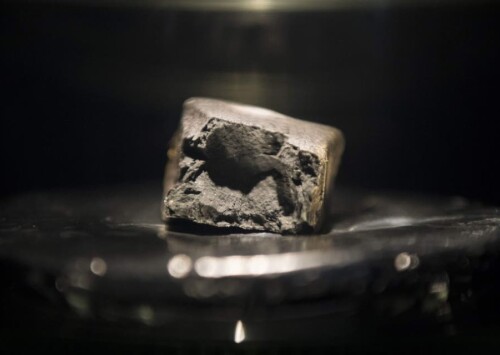Northeast India: Gems of an unexplored paradise
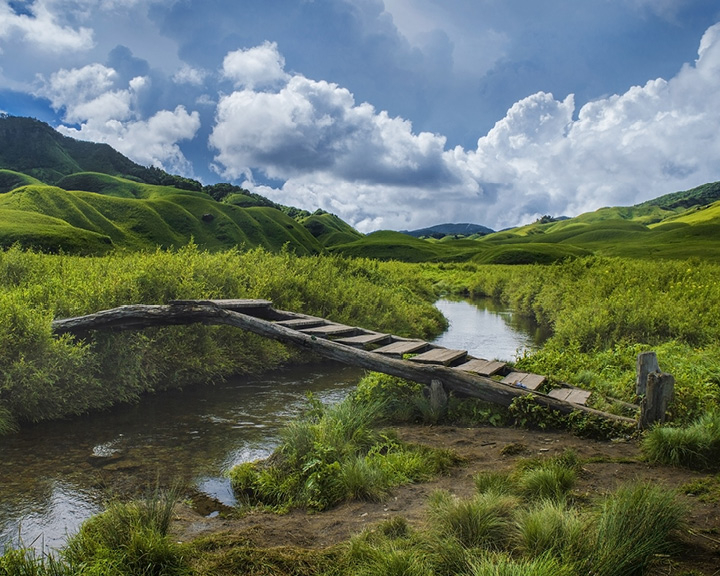
Dzukou Valley in Nagaland is filled with endless greenery and rolling meadows and an ideal spot for trekking
Northeast India, a region stunning beyond words is not often spotted in the travel itineraries of people while choosing a domestic destination. Famous for lush green hills and scenic landscapes, the region has much more to offer the tourists, ranging from rich heritage to carefully nurtured traditions and customs.
Here is a list of some of the most stunning and unexplored places nestled in the lap of the seven sisters.
Sivasagar, Assam
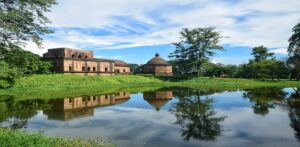
Rang Ghar in Sivasagar, Assam
While people visit places like Jaipur in Rajasthan to explore the rich history of India, lying hidden amidst the gorgeous valleys in Assam, Sivasagar is a small town that plays an equally important role in Indian history. The picturesque location, about 375 km east of capital Guwahati, is known as the capital of the Ahoms, tribal group from the Indian states of Assam and Arunachal Pradesh and is filled with decorated monuments and architectural marvels of the time. The town is also home to the highest Lord Shiva’s temple in India, Shiva Dol, hence acquiring the name Sivasagar, ‘the ocean of Lord Shiva’.
Apart from majestic temples and monuments like Rang Ghar, one of the oldest surviving amphitheatres in Asia, the location is also a paradise of migratory and resident birds like grey leg goose, spot billed duck, mallard, gadwall, wigeon making it an ideal destination for bird watchers.
Mawlynnong Village, Meghalaya
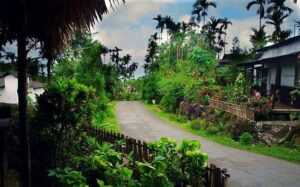
Mawlynnong Village in Meghalaya has been named the cleanest village in Asia in 2003 (traveltriangle)
About 80 km south of capital Shillong, this small village in Meghalaya, no less than a mystical paradise, is also known as “God’s own Garden”. This village is famous for its unique and magnificent self-constructed living root bridges which have also been named as a UNESCO World Heritage Site.
The khasi tribe living in the village can easily be named as the most unique and the biggest attraction for outsiders with their unconventional and inspirational notions. In this tribe, children inherit their mother’s surnames and property is also passed through the matrilineal lines.
Unakoti, Tripura
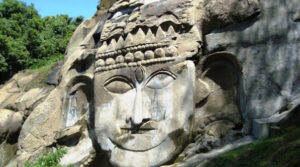
Unakotiswara Kalabhairava in Unakoti, Tripura (travelwithtarikull)
Unakoti, which means one less than a 10 million, is a unique location, home to hundreds of massive rock-cut sculptures made out of sandstone. Among them is a 10 m high bust of Lord Shiva locally called Unakotiswara Kalabhairava. On each side of the head-dress of the central Shiva, there are two full size female figures – one of Durga standing on a lion and another female figure on the other side. In addition three enormous images of Nandi Bull are found half buried in the ground. The beautifully landscaped forest area with green vegetation all around further adds to the beauty of the carvings.
The site is also filled with scattered ruins of ancient temples. It is about 180 km away from capital Agartala.
Champhai, Mizoram
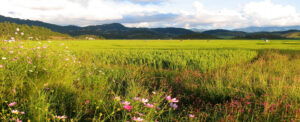
Kiwi fruit plantations in Champhai, Mizoram
This offbeat destination, about 190 km from capital Aizawl, in Mirzoram is sure to cast a spell upon any traveller with its scenic landscapes, ancient ruins and memorials of legends and folk lore. The subtle blend of history and legend with majestic landscapes makes Champhai an ideal tourist destination.
The town popularly known as the “Rice Bowl of Mizoram” is located near the border with Myanmar, allowing tourists to witness the beauty of the majestic Myanmar hills in the backdrop.
The small town is full of well tended vineyards, passion fruit and the kiwi fruit plantations, giving tourists a chance to see some of the most awe-inspiring views of Mizoram.
Andro, Manipur
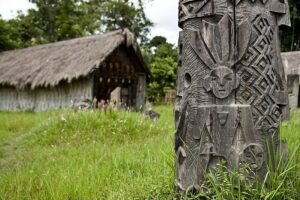
Cultural Heritage Complex in Andro, Manipur
This tiny village, about 25 km from Imphal, capital of Manipur, is tucked away in the foothills of Nongmaiching range and offers an insightful gaze into the rich history and tribal traditions of the state. From scenic beauty to traditional handicrafts and ancient temples shrouded in folklore, this village offers a wide range of attractions for tourists.
The cultural complex-cum-museum established to preserve the slowly-disappearing traditions and customs displays the stunning cultural legacy in the form of beautiful paintings, handicraft tribal dolls, stone figurines and wood carvings of local legends. Another captivating sight to see in Andro is the ancient temple dedicated to the governing deity of the village, Panam Ningthou which houses a sacred fire that has been burning since it was first lit nearly 1,000 years ago. The temple is locally known as Chakpa Panam Ningthou Meithoupirol Shanglen or Mei Mutaba.
Dzukou Valley, Nagaland
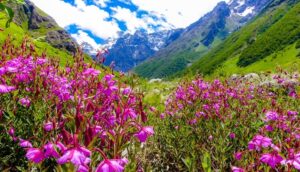
Valley of Flowers, Nagaland
Also known as the Valley of Flowers, this town, close to capital Kohima, is a dreamland for nature and adventure enthusiasts. Filled with endless greenery and rolling meadows, the town is known for its adventurous treks.
The destination is best visited in full bloom season when tourists can enjoy the beauty of countless lilies blooming in vibrant hues of white and pink. Other botanical species native to the area include aconitums and euphorbias. The Japfu range and camp at the peak offers a splendid view of the entire valley.



